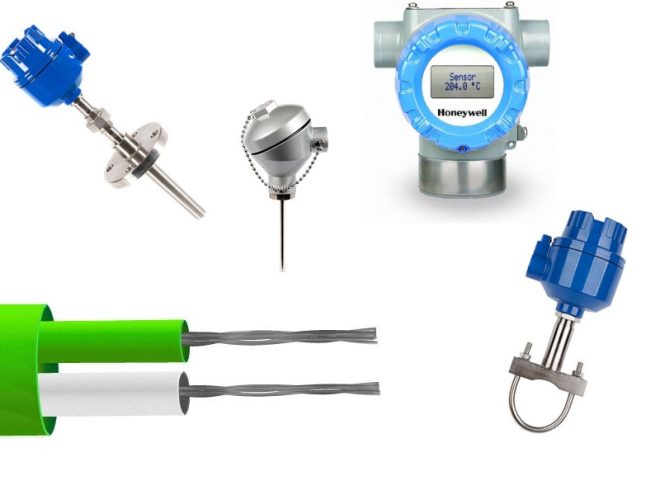Thermocouples are among the most popular types of temperature sensor types in industrial applications. Their biggest advantage of a thermocouple is that it can measure very high temperatures even much higher than RTDs. However, thermocouples do not give us an absolute temperature reading; they only give us a relative measurement. This application note discusses the basic operation of a thermocouple, which includes the definition and function of a reference (cold) junction.
How does a thermocouple work?
These sensors consist of two wires of dissimilar metals joined together at a single point or junction. As a result, the union between these two metals generates a voltage that is a function of temperature. Thermocouples operate on this principle called “Seebeck Effect”. While almost any pair of metals can be used to create a thermocouple, only a certain number of them are used because they produce predictable voltages and wide temperature gradients.

To know what the temperature is at the hot end, we will need to identify the voltage produced and the temperature at the other (cold) end. Unfortunately, it is not possible to connect a voltmeter to the thermocouple to measure this voltage because the multimeter connection is typically a different material than the thermocouple material. Therefore, we will be creating two new thermocouples in the multimeter connections. A technique known as Cold Junction Compensation was developed to solve this problem.
Cold Junction Compensation
Initially, the cold end was put in an ice bath; something that any laboratory could reproduce. Next, thermocouple voltage tables were developed based upon the cold junction end being in an ice bath. The voltage was recorded and looked up in the tables referenced to the ice bath (0°C) and the hot end temperature was derived.

Today, it is impractical to use the ice bath in industrial uses. There are two commonly used approaches:
- Connect a voltage source in opposite polarity to the J1 junction with a voltage magnitude equal to the voltage produced at the J2 junction as shown in the picture:

Then, this allows electronics to use the established thermoelectric voltage tables (or polynomials) to determine the temperature at the hot end. This approach makes two approximation errors, one for estimating the cold junction temperature, and one for approximating the effects on junction potential.
- Independently measure the temperature of the cold junction. Measure the thermocouple potential and apply conversion curves to determine the temperature difference across the thermocouple. Then add the known cold junction temperature to the measured temperature difference to determine the absolute temperature measurement.

This approach uses one less estimate, but it still depends on accurate measurements of the cold junction temperature.
Thermocouples are differential temperature-measurement devices. When working with them, a reference point must be established. The main selection criteria for the appropriate cold-junction compensation device are accuracy, cost, linearity, and temperature range. Some platinum RTDs offer the best accuracy, but at higher cost. Thermistors are inexpensive and operate over a wide temperature range, but their lack of linearity can be problematic. Silicon temperature-sensing ICs operate over a narrow temperature range but offer reasonable accuracy, linearity, and low cost, thus making them a suitable choice for many thermocouple cold-junction compensation applications.
Via our partnership H&B Sensors, Fluidic can supply complete temperature instrumentation assemblies. Please take a look at our thermocouple range and accessories such as connection heads, thermowells and transmitters. Our team is technically trained to help with any instrument selection.
For further information regarding thermocouple charts please check our post here.

